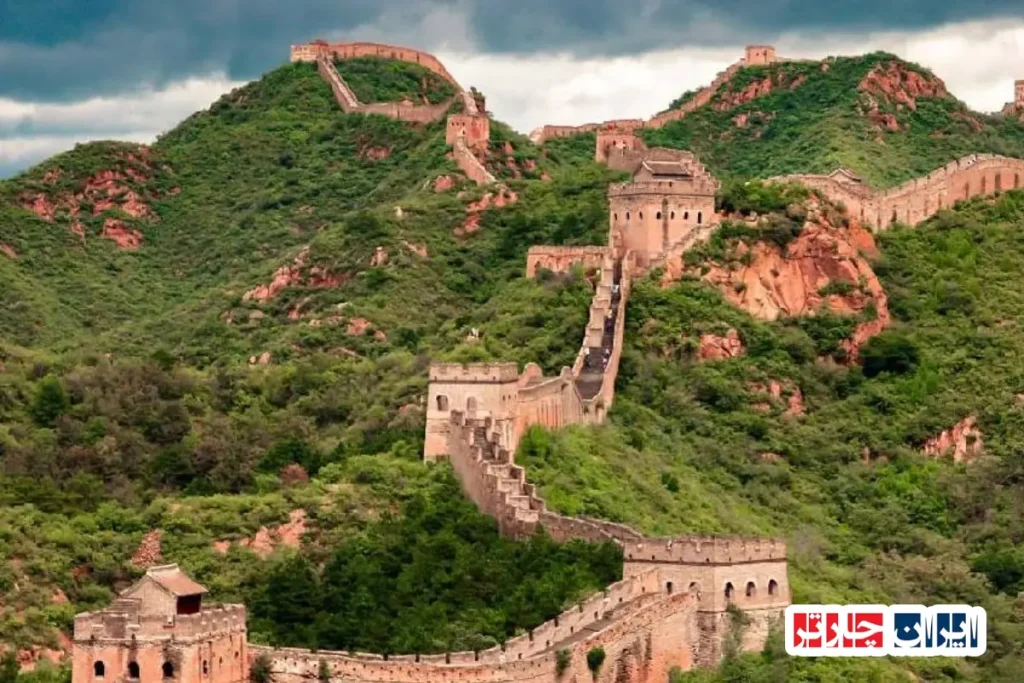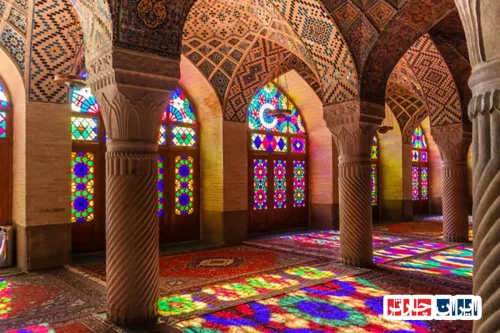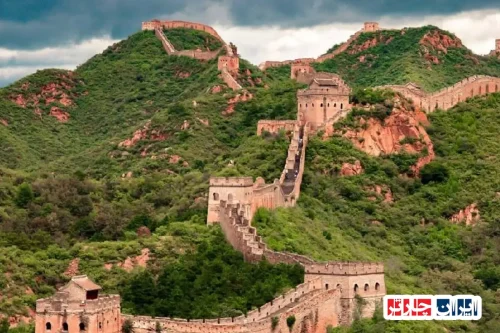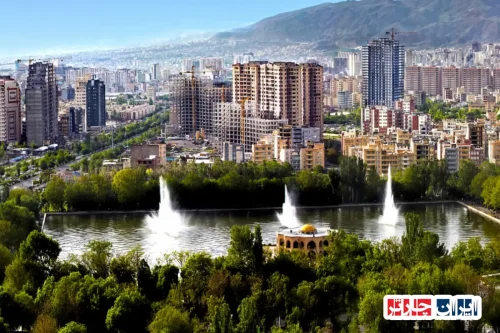The Great Wall of China
The Great Wall of China: Introduction and Historical Significance
The Great Wall of China, an unparalleled masterpiece of human engineering and will, is not only one of the most famous man-made structures in the world but also a powerful symbol of China’s long history, rich culture, and resilience. This colossal structure, stretching for thousands of kilometers along the rugged terrain of northern China, was initially built for defensive purposes; a barrier against the invasions of nomadic tribes, especially from the north. Its vast scale and extraordinary length have made it one of the most ambitious construction projects in the history of humankind, astonishing millions of visitors from around the globe every year.
The historical significance of the Great Wall is deeply profound. This wall is not a single unified structure but a collection of walls, fortifications, and watchtowers built and rebuilt over centuries by different Chinese dynasties. Its role in protecting the Chinese territory and civilization from external threats has profoundly impacted the shaping of the land’s history and identity. The Great Wall of China has witnessed countless historical events and stands as a testament to the resistance and organization of the ancient Chinese people. Its recognition as a UNESCO World Heritage site underscores its unique cultural and historical importance on a global scale.
History of Construction and Development of the Great Wall Across Different Dynasties
The history of building the Great Wall of China dates back centuries before Christ, when various Chinese states built walls to protect themselves from each other and from invading tribes. A turning point in the history of building this wall occurred with the rise to power of the first Emperor of China, Qin Shi Huang, in the 3rd century BCE. After unifying China, he ordered the connection of the walls of the former states to create a unified defensive system along the northern borders. These early walls were primarily constructed from rammed earth, wood, and local stones and were not as robust and continuous as the sections we see today.
During subsequent dynasties, particularly the Han Dynasty and the Ming Dynasty, work on the wall continued and expanded. The Han Dynasty extended parts of the wall westward to protect the Silk Road trade routes. However, most of the sections of the Great Wall that are visible and preserved today are from the Ming Dynasty era (1368-1644 CE). The Ming emperors, having learned from past failures against invaders, built more robust walls using bricks and stone and added more watchtowers and fortresses. The process of building and rebuilding the wall over more than two thousand years demonstrates the continuous and immense efforts of the Chinese people to safeguard their land.
The Astounding Structure and Dimensions of the Great Wall: A Look at Length, Height, and Towers
One of the first questions asked about the Great Wall of China is its exact length. Official estimates state the total length of this structure is approximately 21,196 kilometers. However, it is important to note that this figure includes all main sections, branch lines, parallel walls, and even natural barriers like mountains and rivers that were used as part of the defense system, not just a single continuous wall. The width and height of the wall vary at different points, but generally, its design was such that it allowed for the movement of soldiers and military equipment on top while also providing a commanding view over invaders; its width typically ranges from 4 to 5 meters and its height from 5 to 8 meters or more.
Beyond the wall itself, its structure includes other vital components that played an important role in its defensive effectiveness. Watchtowers are among the most important of these components, located at regular intervals along the wall. These towers had multiple uses, including observation and signaling the approach of enemies (often using smoke or fire), storing equipment and supplies, and providing shelter for soldiers. In addition to watchtowers, the Great Wall also included fortresses, strategically located passes or gates, and beacon towers, all working together to form a complex and efficient defensive network.
Guide to Visiting the Great Wall of China: Introducing the Most Famous Sections and Travel Tips
When planning a visit to the Great Wall of China, it is important to know that it’s not possible to visit all 21,000 kilometers of it. Tourists typically visit specific sections that are accessible, often restored, and offer different experiences. Most of these famous sections are located near Beijing, the capital of China. The Badaling section is one of the most famous and heavily visited sections, which is well-restored, easily accessible, and offers complete visitor facilities, but consequently is often very crowded. The Mutianyu section is another popular choice that is well-restored, offers beautiful scenery, and is usually less crowded than Badaling, and with the presence of a cable car, it is more suitable for families.
There are also other sections of the Great Wall that offer different experiences, ranging from more challenging hikes to seeing less restored parts of the wall. The Jinshanling section is popular for hiking due to its numerous watchtowers and surrounding natural landscapes, while the Simatai section, which is the only part sometimes lit up at night, offers a different experience of hiking on less restored sections. For visiting, wearing comfortable walking shoes is essential. Also, checking the weather before going and choosing the appropriate transportation method to reach the desired section (such as tourist buses, taxis, or organized tours) are important travel tips for visiting the Great Wall.
The Great Wall of China in the Mirror of Culture, Myths, and Interesting Facts
The Great Wall of China is not only a massive physical structure but also holds a special place in Chinese culture and national identity. It is recognized as a symbol of the Chinese people’s resilience, perseverance, and unity throughout the centuries. Numerous phrases and proverbs in Chinese culture refer to the Great Wall, including the famous saying, “Unless you reach the Great Wall, you are not a hero,” which signifies perseverance and overcoming difficulties. The Wall is also extensively depicted in Chinese art, literature, and media, forming an inseparable part of the nation’s cultural identity.
Alongside its cultural significance, the Great Wall of China is intertwined with a collection of myths, legends, and interesting facts. Perhaps the most famous legend associated with it is the story of “Meng Jiangnü,” a woman whose husband died during the Wall’s construction, and her tears caused a section of the Wall to collapse, allowing her to find her husband’s bones. A common misconception is that the Great Wall is visible from space with the naked eye, although astronauts have refuted this. There are also interesting facts about its construction, such as the use of a mixture of sticky rice in the mortar of some sections, or the heavy human cost of its construction, which led to the loss of countless laborers’ lives. This combination of real history, myths, and interesting facts doubles the attraction of the Great Wall of China.
FAQ
What was the primary purpose for which the Great Wall of China was originally built?
It was primarily built for defensive purposes, as a barrier against the invasions of nomadic tribes, especially from the north.
Was the Great Wall of China built as a single, continuous structure?
No, it is a collection of walls, fortifications, and watchtowers built and rebuilt over centuries by different dynasties, not a single continuous wall.
Which historical dynasty is associated with most of the currently visible sections of the Great Wall?
Most of the sections of the Great Wall that are visible and preserved today are from the Ming Dynasty era (1368-1644 CE).
What is the estimated total length of the Great Wall of China?
Official estimates state the total length is approximately 21,196 kilometers, including all main sections, branches, and related structures.
What was the function of the watchtowers along the Great Wall?
Watchtowers were used for observation and signaling, storing equipment and supplies, and providing shelter for soldiers.
Can visitors explore the entire length of the Great Wall?
No, visitors usually see specific accessible and often restored sections, mostly located near Beijing.
What are some popular sections of the Great Wall to visit, especially near Beijing?
The Badaling and Mutianyu sections are among the most famous and popular for tourists.
What practical tips are recommended for visitors planning to walk on the Great Wall?
Wearing comfortable walking shoes, checking the weather, and considering transportation options to different sections are recommended.
What does the Great Wall symbolize in Chinese culture?
It is recognized as a powerful national symbol of strength, resilience, and unity of the Chinese people.
Is the claim that the Great Wall is visible from space with the naked eye true?
No, this is a common misconception, and astronauts have refuted this claim.











